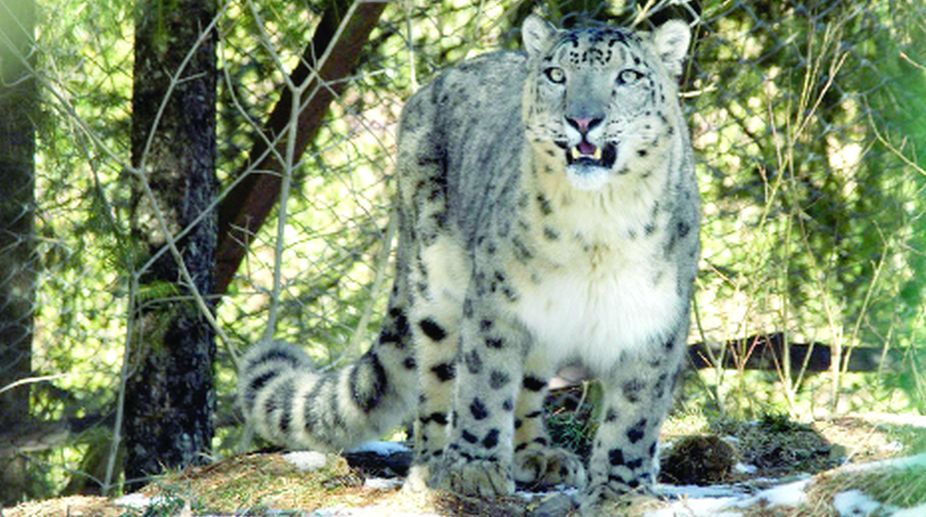BJP manifesto yet another poll gimmick: Pratibha Singh
Himachal Pradesh Congress President and MP Pratibha Singh has termed BJP’s Lok Sabha poll manifesto yet another poll ‘gimmick’.

(Photo: SNS)
While the others parts of Himachal are affected by man-animal conflict, the Spiti valley in the tribal district of Lahaul and Spiti can boast of peaceful co-existence. In fact, the heart-warming empathy towards the endangered snow leopard in the Spiti valley has boosted the prospects of the animal in the region.
Incidents reflecting sensitivity of local residents to wildlife have encouraged peaceful co-existence. The area predominantly abides by the teachings of Lord Buddha, and the Buddhist belief is that taking a life is a sin.
In an ideal gesture of man-animal bonding, on 20 March, a snow-leopard (locally know as ‘Shen’), strayed into the cow-shed of a local resident of Shisnha village under Demul panchyat. The residents of the village gathered, without raising much alarm, and trapped the animal with scarce resources in a localised cage. They later released the frightened snow leopard into the wilderness.
Advertisement
“The incident was reported in Shishna village where the locals ensured the safe return of the animal into the wild. The natives of the region otherwise are sensitive to all animals, whether domesticated or wild. We also do not abandon our domesticated animals after they fail to serve the purpose. Our old cows die in cow-sheds, unlike in other districts of the country, where they are abandoned once they cease to be productive and are branded as stray animals,” said Padma Butit, the panchyat pradhan of Demul. Other wild animals like the Himalayan blue sheep, wolf, Ibex, jackal are equally sacred for them, she added.
Almost a year ago, in February 2017, the residents of Kibber village in Spiti valley went the extra mile to extend comfort to an ailing old snow-leopard, who had lost the strength to hunt for his food. When the animal came close to the village to prey on the livestock, moved by his plight, the natives instead of retaliating acknowledged his presence.
“The animal was taken care of by the natives, who even fed him meat. When the leopard died after 10 days, it was given a celebrated cremation,” recounted Kibbar Panchyat Pradhan, Tanzin Angmo.
There is no hunting of wild animals at all and the positive approach of the local residents has helped not only in increasing the number of snow leopards, but also led to a rise in the leopard’s natural prey that includes other wild animals.
The Nature Conservation Foundation (NCF), Mysore, along with the Himachal Forest Department has jointly launched a conservation project to survey, monitor and ascertain the population of the snow leopard in the Spiti valley, which is a significant snow leopard landscape, the other being Ladakh in Jammu and Kashmir.
NCF Programme manager, Ajay Bijoor, who has been working in the Spiti valley for the last six years said, “There has been an increase in snow leopard sightings and the animal count being captured on trap cameras has shown that the population is increasing.” The people are largely compassionate and receptive to the need for conservation efforts to save the endangered animal which their religion also professes, he added. The NCF is also running a SHEN project, the name derived from the local name for snow-leopard, wherein women are engaged in wildlife conservation efforts and making handicraft products, especially during winter, from December to April when there is hardly any other activity.
The leopards have also been frequently seen near human settlements. Both the residents and the snow leopards show little fear towards each other. “As far as I know, there has never been any case of the snow leopard attacking human beings, which has also probably led to making peace with the otherwise feared animal,” said Padma Butit.
Advertisement